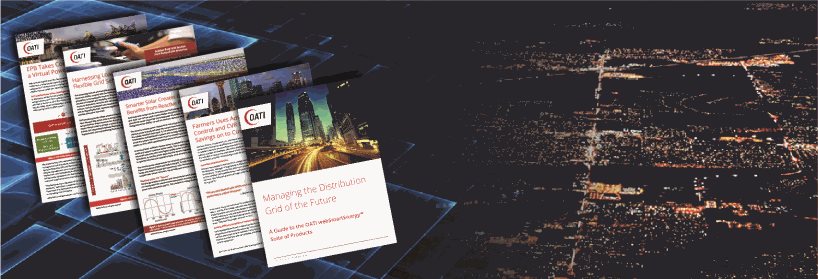Home » Blog » Grid Modernization » Top 2017 Smart Grid Content
Top 2017 Smart Grid Content
As consumer adoption of Distributed Energy Resources (DERs) at the grid edge is reaching commercial maturity in some power markets like CAISO, NYISO, and ISO-NE — utilities small and large are increasingly looking for ways to seize the opportunities offered by DERs while minimizing their impacts. What is becoming clear to utility executives is that the traditional centralized utility value chain is being transformed into a decentralized dynamic network, generating new opportunities as well as challenges. It is no longer “business as usual.”
Utilities are looking for Distributed Energy Resource Management Systems (DERMS) that can provide them with the flexibility to mitigate DERs intermittency, maintain distribution reliability and power quality, while capitalizing on DERs economic benefits. Stakeholders need all the help they can get to navigate this evolution towards a smarter and more responsive grid. In this blog post, OATI brings together the top resources power professionals and grid planners need to plan a more productive 2018.
Solution Brief: Using Distributed Power to Provide Flexible Grid Services
To help manage the influx of variable generation in the distribution grid, power utilities need access to alternative resources that can provide frequency response and ancillary grid services in a cost-effective manner.
With OATI webSmartEnergy Solutions, these flexible grid services can be enabled through coordinated management of various assets at residential, commercial, and industrial facilities.
Learn how to model the unique grid services each building can supply, manage, and schedule the resulting aggregated Virtual Power Plants (VPP), etc. Request the Solution Brief to learn more.
Solution Brief: Smarter Solar Creates Real Benefits from Reactive Power
Did you know you can use grid-scale solar arrays to prevent major blackouts as well as ensure grid stability? The secret is reactive power, which is essential for proper operation of Transmission and Distribution systems and strongly influences voltage levels across the system. The National Association of Regulatory Utility Commissioners (NARUC) honored the National Renewable Energy Laboratory (NREL)/First Solar/CAISO project that demonstrated these benefits on a grid-scale.
Reactive power, measured in Volt-Amperes Reactive (VARs) can be used to enhance the Transmission and Distribution systems and minimize active power losses. Furthermore, actively managing your active/reactive power mix can improve power quality for industrial customers — and even help prevent the catastrophic blackouts of years past. Request the Solution Brief to learn more.
Case Study: Farmers Electric Achieves Grid Efficiencies without Impacting Customers
Farmers Electric Cooperative, Inc. (Farmers) was looking for ways to cut peak consumption by improving efficiencies in their distribution operations. Farmers knew it needed to perform Demand Response (DR) in an automated and consistent fashion without member involvement. Like many distribution cooperatives, Farmers knew that if it was able to reduce the peak demand fees charged by its Generation and Transmission (G&T) provider, those savings could be passed on to its members. Want to learn more? Get your copy of the Farmers case study today.
Case Study: See How EPB Uses a Virtual Power Plant to Reduce Demand Charges
EPB received a grant from the Tennessee Valley Authority (TVA) to develop and implement virtual power plants as a source of generation.
In selecting a vendor for the project, EPB wanted a company who understood the energy industry and TVA’s trading practices. OATI was able to rise to the challenge with our comprehensive distribution management tool, webDistribute. Through webDistribute, EPB is able to do load control as well as conservation voltage reduction to cut load and participate in TVA’s DR efforts — and avoid extra demand charges. Want to learn more? Request your copy of the EPB case study today.
Brochure: Managing the Distribution Grid of the Future
In the last few years, many power industry analysts felt that energy storage was going to drive the conversation and influence growth strategies. It was a significant factor, culminating in FERC’s 61,121 Notice of Proposed Rulemaking (NOPR) of November 2016. However, as Smart Grid technologies have become more accessible and affordable, it no longer matters whether it is energy storage, microgrids, or other behind-the-meter resources that are the next big thing. What is relevant now, is how utilities are strategically positioned to seize the opportunities presented by this constant evolution. Understanding how to make change an ally is fast becoming a prerequisite for creating successful growth strategies.
The OATI comprehensive brochure provides not only the key trends and their impacts that utilities need to be mindful of, but also the solutions that are already helping many utilities and grid planners resolve these emerging challenges. Request a copy and make your 2018 strategic plans with confidence.
- December 26, 2017
